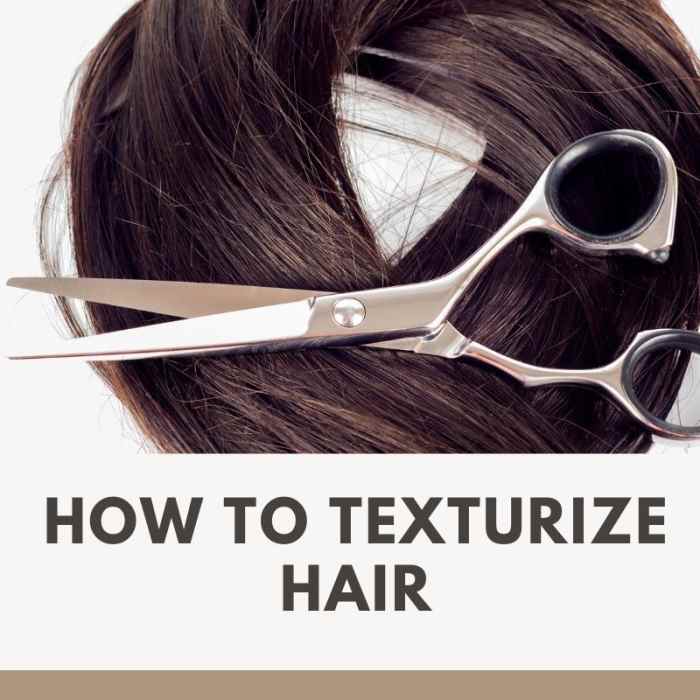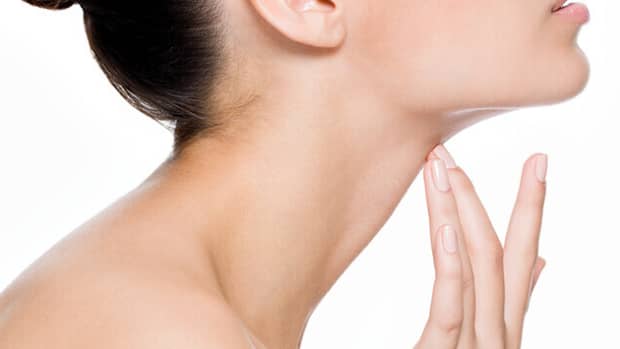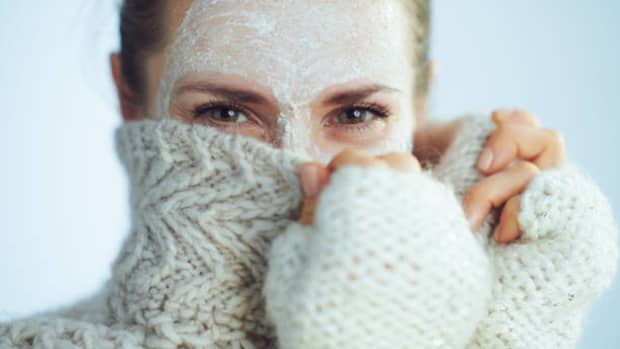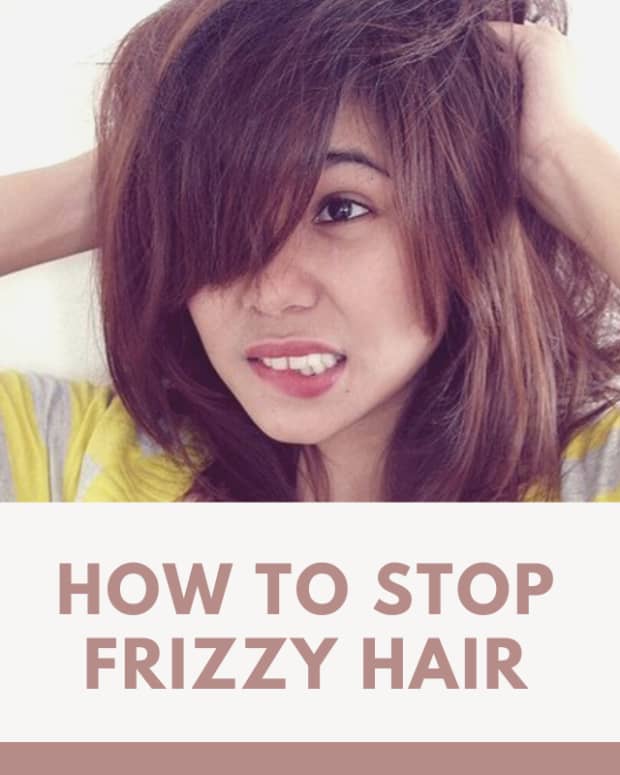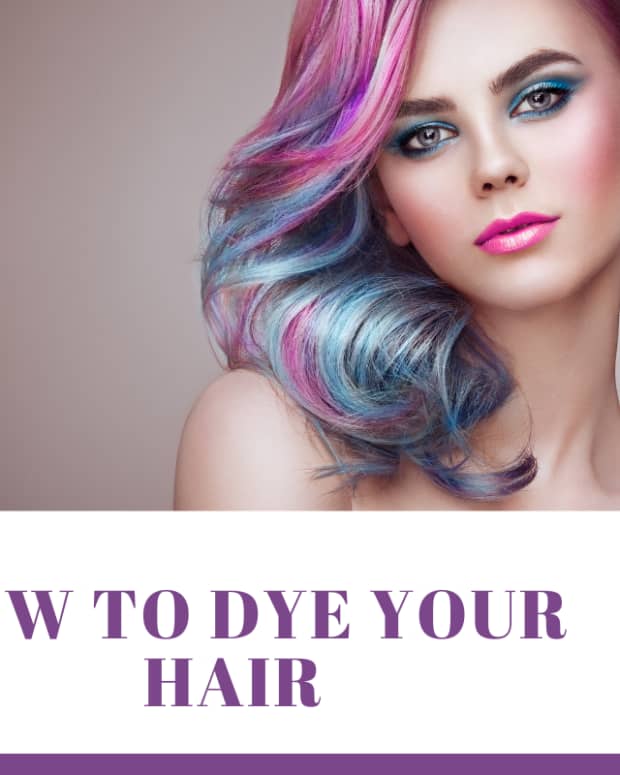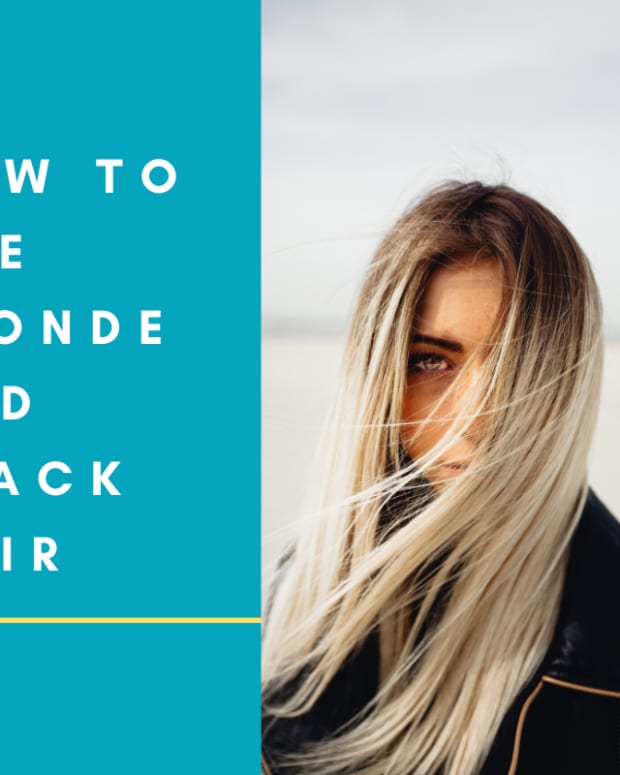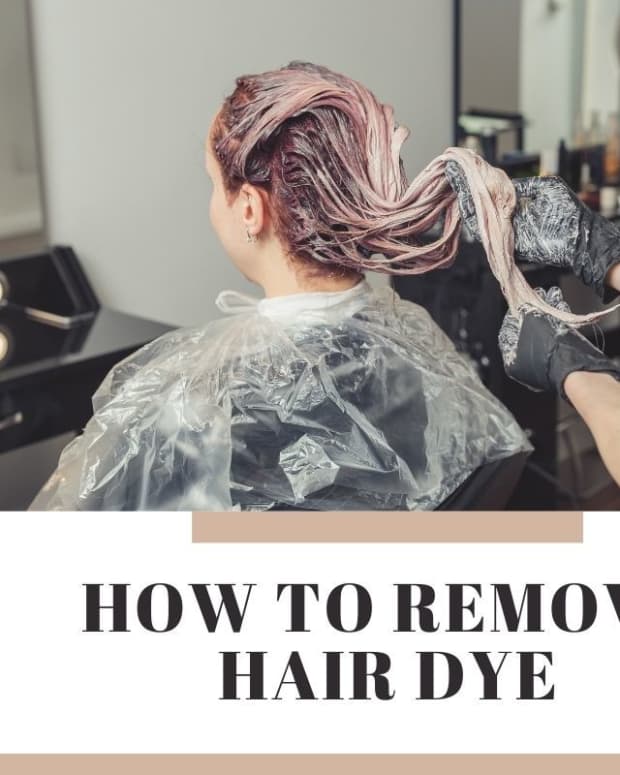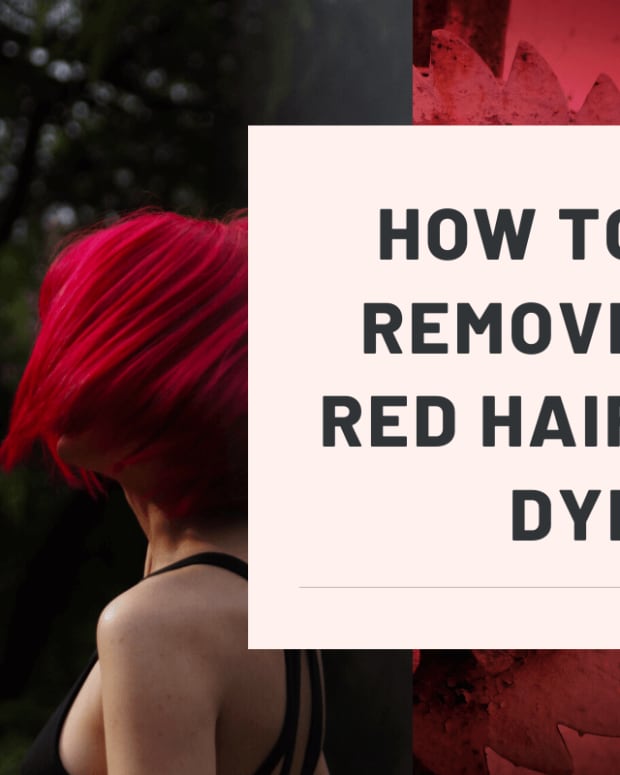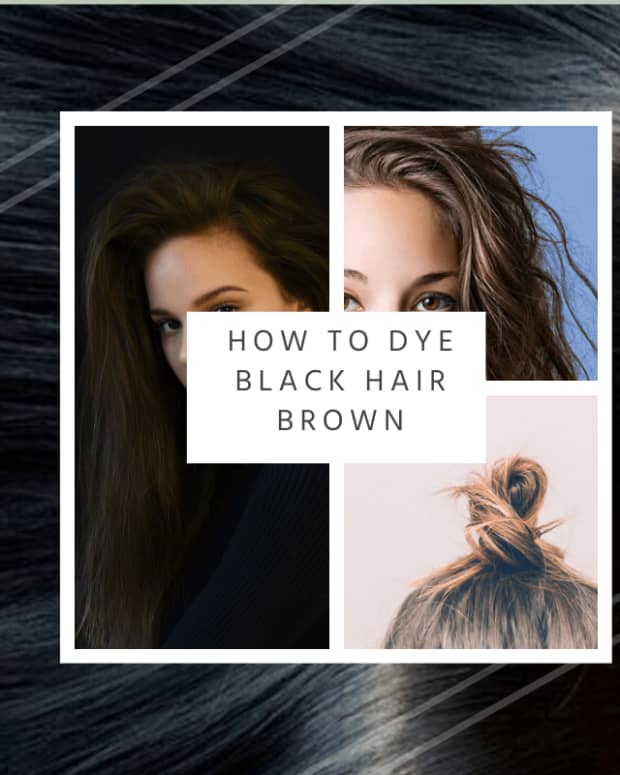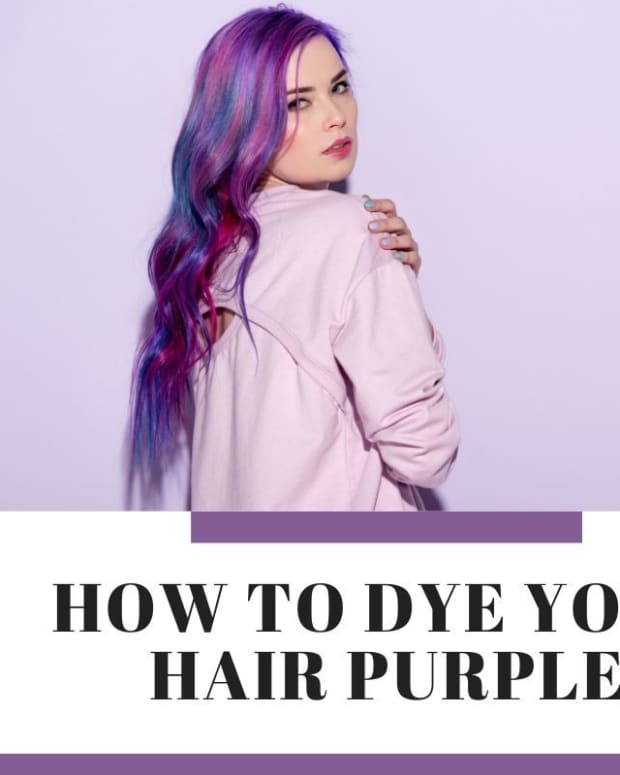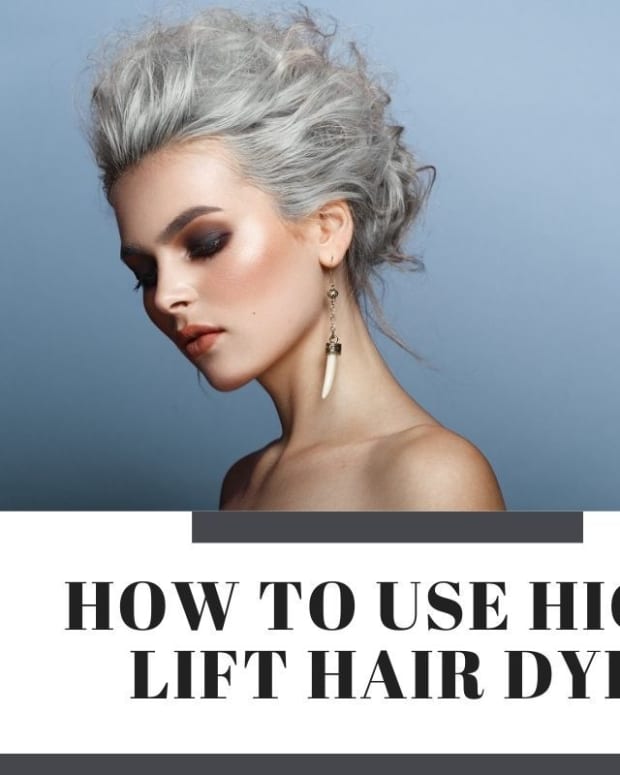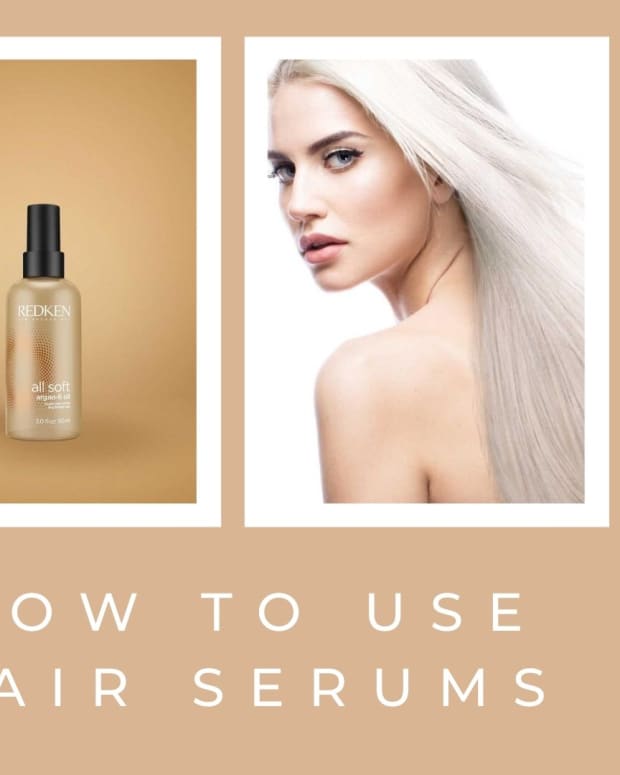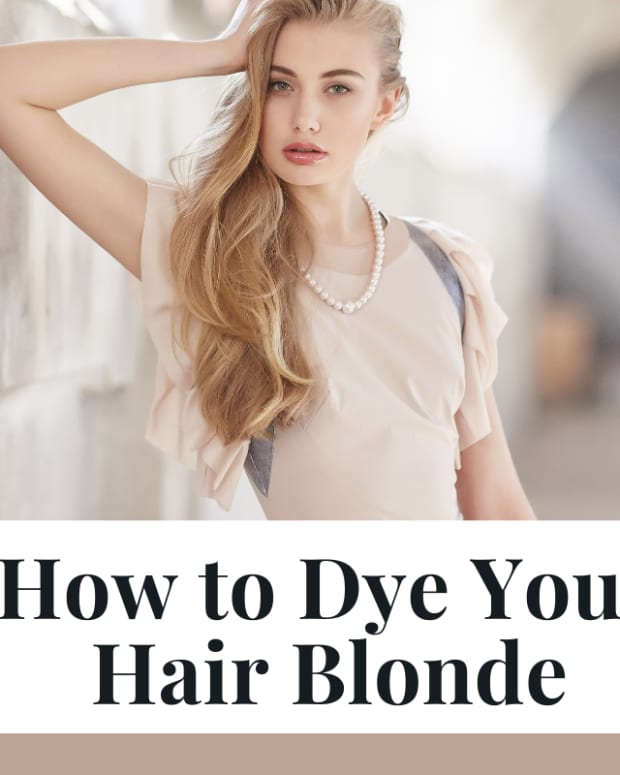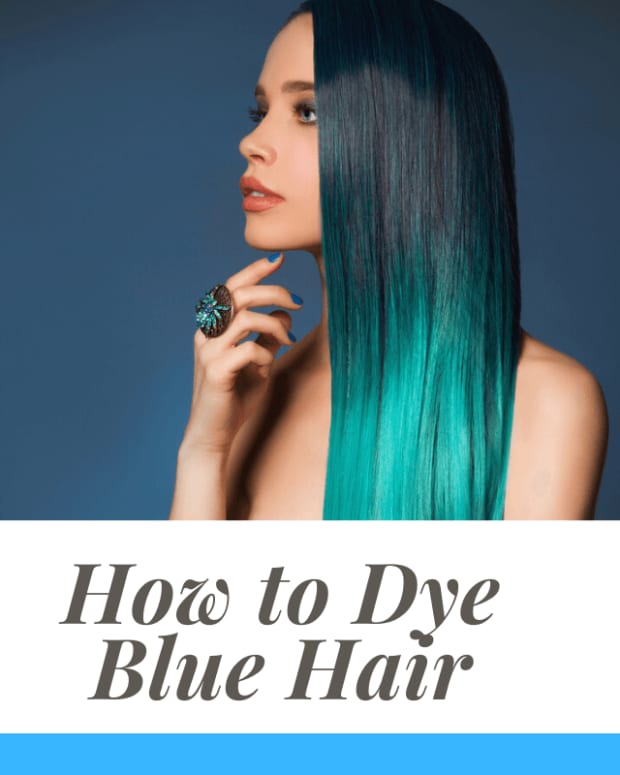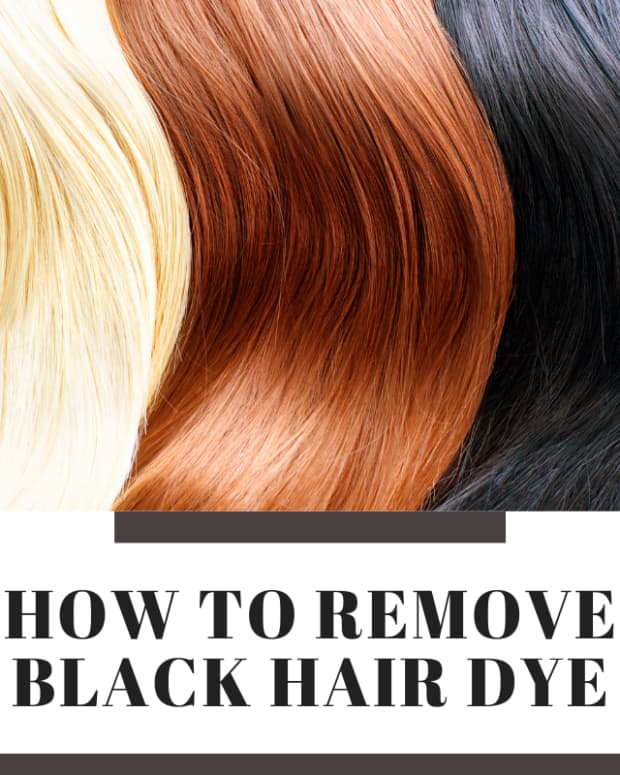How to Texturize Hair
Maffew is a hairdresser, marketer, and dabbler in many things who enjoys sharing knowledge about the science of hair coloring and hair care.
Hairdressers are a luxury and when you visit one, you can expect to be pampered and made comfortable. It's common for a salon to offer massages and other forms of relaxation as part of their styling or color packages these days, and you can even expect a complimentary coffee or tea while you wait for your new hair color to process.
However, all of this hospitality has its price, and from the moment you walk in, you're about to pay for more than just the cost of a cut or color. Style cuts, or hair cuts that involve a lot of layering and texturization add time to the service, and cost to you. You can save yourself some money and the trip to the salon by learning to texturize your own hair.
What Is Hair Texture?
Hair that is cut with a blunt technique looks uninteresting and unnatural. To prevent this from happening, hairdressers use a variety of hair texturizing techniques to add more interest and movement to a style.
In this context, texture is used to describe the way your hair has been cut. Hair that has been cut into shaggy, choppy, or feathered layers is more texturized than hair that is cut parallel. Hair texturization adds movement and interest to a style.
Hairdressing Equipment
If you want to texturize hair, you can't do it without the right equipment. Scissors, of course, are the most important item on this list, but you can't just pick up any pair and start snipping away. Hairdressers use specially designed scissors because they're ergonomic, very sharp, and the right size to work with your hair.
Most common household scissors like the ones used for sewing or kitchen work, simply aren't up to the task of cutting hair and will cause you more trouble than it's worth. Blunt scissors increase the risk of split ends and should be avoided at all costs. The single best way to texturize your hair is to use the scissors that hairdressers use, and this will guarantee the best results.
You can pick up a quality pair of hairdressing scissors for under $100. While hairdressers will spend significantly more on their own scissors, they need a pair that is durable enough to withstand use for hours a day, every day of the week. For at-home purposes, where you'll likely only cut your own hair every 2-3 months, cheaper hairdressing scissors will give you great results.

Hairdressing scissors and razors have some key differences but both can be used to create great styles.
Scissors vs. Razors
Instead of scissors, you may prefer to use a razor depending on the type of style you want to create. Scissors are used to texturize hair by using specific techniques and can give you a greater range of texturization. A razor, however, tends to texturize the hair by default, creating softer results by feathering and thinning the hair as you cut it. This gives you less control over the texturization, but it is also an easier process.
If you plan on using a hairdressing razor to texturize hair, the razor itself is fairly cheap to purchase. You need to buy razor blades separately and replace them as they dull. Depending on how intensively you use the razor and how thick your hair is, you may be able to use the razor blade for more than one haircut. They're cheap to buy and you don't need to worry about dulling of scissor blades when you use them.
Thinning Shears
Thinning shears have a special guard in one of the blades that ensures that only some of the hair is cut when you close them over a section of hair. They can be used to thin hair evenly and easily by themselves, or even combined with texturization techniques like twist cutting.
Texturization Techniques
There are many different techniques that can be used to texturize your hair. Each technique requires you to use your scissors in a specific way to shape the hair, leading to an end result that can look anything from choppy and heavily layered, to a smooth feathered style.
- Point cutting
- Slithering
- Weaving
- Twist cutting
- Chipping
- Smooth-cutting
Point Cutting
Point cutting is a finishing technique used to shape the ends of your hair. It involves taking sections of hair and cutting with your scissors held vertical to the hair's direction to snip little chunks of hair away. This leads to a smoother result because your layers don't appear to finish as a blunt edge.
The degree of the effect you want to achieve is determined by the angle of your scissors. For more noticeable texturization, use your scissors at up to a 45-degree angle, being careful to only cut small chunks at a time. A heavier angle is used to achieve a choppy layered cut.
If you prefer a subtle effect, you can hold the scissors straighter, which will create softer styles. This method still removes excess bulk and helps your hair to sit better without looking blunt and being difficult to style. Even if you have a straight fringe, subtle point cutting can help improve its appearance without detracting from the style.
Read More From Bellatory
To use point cutting to best effect if you have a shorter hairstyle, apply the technique all over to texturize your hair and improve its look. For longer styles, use point cutting to soften your fringe and the lower layers of your hair in particular.
How to Point Cut
Slithering
Slithering is a hair texturizing technique best used on thicker hair. When used on hair that is thick and hard to manage, it can thin out some of the excess bulk and add volume where it's needed to keep your hair from looking flat.
To use the slithering technique to thin out thick hair, take sections of your hair and use your scissors to slither it by gently sliding the blades out from the mid-lengths of your hair towards the ends. You only need a light grip on the handles of the scissors to achieve this effect and will need to be careful not to apply too much pressure.
Slithering can also be used to add volume to your hair if it tends to be heavy and flat. Volume can be achieved by slithering the hair closer to your scalp. This creates graduated, shorter hairs that work to hold up the rest of your hair when you style it.
For extra volume, you can tease slithered hair when you style it to make use of the texturization you've added. The slithering technique makes it easier to style thicker hair into up-styles and voluminous rolls.
Weaving
If you have highlighted hair, you may be familiar with weaving because it's a technique employed to add foiled color to your hair. It can also be used to texturize hair, however, giving results that are similar to slithering or chipping. Whilst slithering is a freehand technique that allows more creativity, when you weave your hair, the slithered effect is more even all over.
To weave hair, take thin sections of hair and use a tail comb to weave through the layer in an M-shaped motion, moving the tail of the comb up and down quickly through the hair. This isolates small chunks of hair, which are then cut to thin out your hair. The weaving motion is repeated all over the head to evenly thin hair. It can be cut with either scissors or a razor.
Twist Cutting
Twist cutting is just as the name suggests. Sections of hair are twisted tightly and cut with scissors to texturize your hair. Because the hair that is twisted is at different lengths where the scissors make contact, the result when you release the hair is a fairly even thinning effect.
This texturization technique is best used to thin thick hair, but it can also be used to help soften blunt tips. You can even apply the slithering technique to the twisted hair to thin your hair and create a style that incorporates more volume and root lift. For those who would prefer to use a hairdressing razor, this tool can be used to achieve twist cutting in much the same way as scissors.
Chipping
Chipping is another technique that can be used to remove bulk and increase volume in thicker hair. This technique is a harsher variant of the slithering technique and will lead to more noticeable results but should only be used sparingly. It can be used to create a long wispy effect in hair.
To chip your hair, take a section of hair and hold it up parallel to your scalp. Use your scissors to chip little chunks away from the mid-lengths of your hair, being careful to maintain a light touch. This is a technique where going overboard can really ruin your style, so careful attention is paramount. When done right, it will dramatically thin out hair that is thick and unruly.
Smooth Cutting
Smooth cutting is a technique used to thin hair with a hairdressing razor. To use the technique, your razor has to have a comb guard attached to reduce the amount of hair that can be cut with each movement of the blade. Some razors have a metal guard built onto the razor, while others have a removable guard. Both work in the same way.
To use the smooth cutting technique to texturize your hair, take sections of hair and lightly slide over them with your razor from mid-lengths to tips. This movement should be fluid and even to avoid cutting too much hair away. As the razor moves through your hair, strands of hair are shortened and your hair is thinned out.
Texturizing Goals
| Hair type | Best techniques |
|---|---|
Thick | Smooth cutting, twist cutting |
Flat | Slithering, chipping |
Dull | Point cutting |
Chunky | Slithering, chipping, point cutting |
Just about any hairstyle can benefit from texturization. If you cut your own hair at home, texturization techniques are a great way to achieve trendier styles without going to the hairdresser.
If your hair is thick, you can thin it out. Hair that sits too flat can be boosted with added volume, and the overall look of your style can be improved with point cutting to eliminate the blunt one-length look when your hair has no texture. It's your style and you can shape it however you want.
© 2014 Maffew James
Comments
Ana Maria Orantes from Miami Florida on June 25, 2014:
Hello Mr. Maffew James. I like your hub. You have excellent techniques for hairstylist. I had tried everything for many years. It is fascinating how you add the pictures and the instructions. I can not write about any of my techniques because I have to keep it sercet. Thank you so much. You are very kind.
Maffew James (author) on June 23, 2014:
Thank you, I'm glad you like it.
Michelle Scoggins from Fresno, CA on June 23, 2014:
Very interesting article. I am a hairdresser by trade and think that this can be helpful to others.

